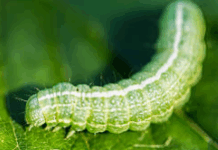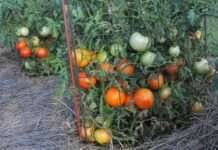If you are planning on overseeding or establishing a Kentucky bluegrass or tall fescue lawn this fall, preparations should start now. These preparations include taking a soil test and controlling weeds if necessary.
A soil test will determine what nutrients are needed. Unless phosphorus levels are high, a starter fertilizer is recommended to encourage rapid germination of grass seed. Once the soil test results are received, the proper fertilizer can be purchased so it can be applied at seeding.
Many areas of Kansas have received sufficient rainfall this summer that weeds, especially crabgrass, may interfere with seeding. If a lawn is being completely redone and weeds are a problem, a product with glyphosate such as Roundup or Killzall can be used to kill everything. Glyphosate is inactivated when it hits the soil and will not be taken up by underground roots. Avoid spraying exposed roots or leaves of any “good” plant. Wait at least two weeks before seeding.
Overseeding is used to thicken up a lawn. Normally we have bare spots that need to be filled in or a thin lawn that needs thickened up. We do not kill the tall fescue or bluegrass when overseeding. Therefore, we cannot use glyphosate to control weeds as it would also kill the turfgrass. Instead we use a selective herbicide that will control both broadleaf weeds and crabgrass. A number of those are listed below. Note that there is a waiting period between when the herbicide is applied and when it is safe to overseed. Usually this is about four weeks. However, check the label of the product you purchased to be sure you allow enough time.
Ortho Weed B Gon Max + Crabgrass Control
Bayer All in One Lawn Weed and Crabgrass Killer.
Fertilome Weed Out with Q
Trimec Crabgrass Plus Lawn Weed Killer
Bonide Weed Beater Plus Crabgrass & Broadleaf Weed Killer
Spectracide Weed Stop for Lawns Plus Crabgrass Killer
(Ward Upham)




